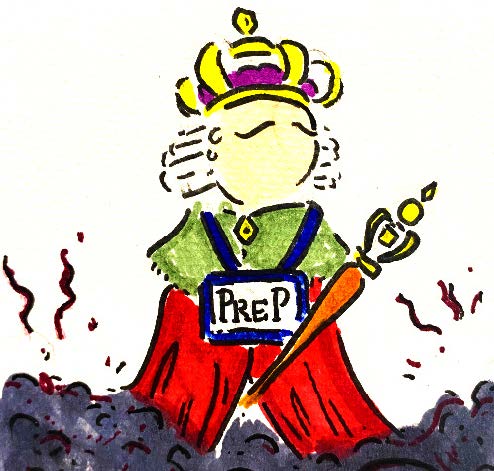Cooper’s Corner: A Military History of Honey
Cooper Roh ’22.
Besides tasting good, being fatal to babies, and triggering a lawsuit against the entire human race, honey is capable of a lot. In fact, a lot more than you may know. Here are just three examples of honey’s military might across the world.
“Mad Honey”
Before we get into our history, we have to get into some basic science. Stuff is made of stuff, according to some science law. Thus, honey absorbs flavors and whatever you put into it. This includes, but is far from limited to, orange blossoms, rosemary, and psychedelic drugs.
Along Turkey’s coast on the Black Sea, many flowers contain a neurotoxin known as grayanotoxin. Naturally, after bees pollinate these, it makes its way into the honey, thereby producing “deli bal,” or “mad honey.” This is some intoxicating stuff, to say the least. It’s capable of inducing “low blood pressure and irregularities in the heartbeat that bring on nausea, numbness, blurred vision, fainting, potent hallucinations, seizures, and even death” in large enough quantities—an all around party!
Back to the history.
During Rome’s third war with Pontus (a kingdom on the Turkish Black Sea coast), the famed Roman general, Pompey the Great, invaded Asia Minor. He was fighting one of Rome’s greatest enemies: Mithridates VI, the “Poison King.” Anticipating Pompey’s forces, Mithridates ordered that bowls and combs of mad honey be placed along the roadside. Like a scene out of A. A. Milne, marching Roman soldiers gorged on the seemingly innocuous honey. Unlike a scene out of A. A. Milne, they soon found themselves in the throes of intense nausea and hallucination. Mithridates’ forces promptly ambushed the delirious Romans, slaying a thousand.
Unfortunately, Mithridates still lost the war. Rather than be captured and paraded through Rome, he attempted to commit suicide via poison. Ironically, he had forgotten that he had, in fact, immunized himself to every single poison out of fear of assassination, at which point, he just had one of his buds stab him to death. Goals.
A Royal Arrow Wound Remedy
We’re now in England, 1403. King Henry IV has marched to meet his rebelling former subordinate Henry “Harry Hotspur” Percy at the town of Shrewsbury. The ensuing battle opened with a rain of arrows from both sides’ archers, equipped with the formidable English longbow, the sniper rifle of the Middle Ages.
An arrow struck Henry IV’s son, the 16-year-old Prince of Wales, in the head, penetrating six inches beneath his left eye. If historical accounts are to be believed, the pain was tantamount to stepping on a lego, but with your face. Unimaginable.
The young prince was immediately placed into the royal care of England’s best surgeons. In the end, the only things they accomplished were breaking the arrow shaft, embedding the arrowhead even deeper into the prince’s skull, and just narrowly missing the brain stem. Truly, the best medical care of the day.
Like an episode of House, the medical staff needed someone who didn’t play by the rules. Someone bold, someone daring, a Hugh Laurie before Hugh Laurie. That’s right, what they needed was…a formerly imprisoned coin counterfeiter named John Bradmore. Truly, the best medical care of the day.
Sarcasm aside, Bradmore was actually the most capable surgeon at the prince’s aid. Upon arriving, Bradmore recognized that any more human meddling with the arrowhead would produce a very dead prince. Thus, using his metalworking skills (the very same that landed him in prison), he devised an extraction instrument, but this would take time. He subsequently recognized that they needed to immediately disinfect the prince’s festering new facehole. The solution? The apiary antiseptic that is our friend, honey.
Apparently, honey “offers antibacterial activity, maintains a moist wound condition, and its high viscosity helps to provide a protective barrier to prevent infection,” making it the perfect remedy. Bradmore poured it into the prince’s wound and then got to work on the extraction device. He finished it, placing it on the prince’s sticky face and skillfully removing the arrowhead.
This operation saved the Prince of Wales. This son of Henry IV grew up into Henry V, one of England’s most beloved kings. During the 116-year-long Hundred Years’ War, Henry led English forces in an invasion of France. He and his “band of brothers” proceeded to obliterate the French knights at the decisive Battle of Agincourt. His key to success? None other than the English longbow.
The Honey War
In 1837, Missouri hired a surveyor named John C. Brown to retrace its northern border, originally set along the 1816 Sullivan Line. Brown’s subsequent resurvey was a nightmare for a number of reasons, the foremost of which being that Sullivan Line’s eastern endpoint, the “rapids of the River Des Moines,” possessed a unique geographical quality also shared by the Mountains of Kong and the nation of Poyais: they didn’t exist. Nine out of ten geographers would agree that it’s generally difficult to find a place that doesn’t exist, let alone start a border from there.
The intrepid Brown trekked nine miles north along the Des Moines River—nine miles into the Iowa Territory—before throwing his hands up and just heading west from there to draw the new border. When Brown reached the new line’s western endpoint, he was actually thirteen miles north of the Sullivan Line, because Sullivan had legitimately failed to draw a straight line since he could not read his compass.
The resurvey produced a strip of land between the Sullivan and Brown Lines which Missouri and Iowa quickly began disputing. Missouri had long coveted the land for its abundant bee trees, as honey was both a natural sweetener on the frontier and beeswax was necessary for candle making. The acquisition of these bees excited Missouri bakers and candlestick makers, although Missouri butchers were reportedly indifferent.
Missouri hadn’t stolen land from someone in more than seven years since the Native Americans had been expelled, and they were just itching to get back into the swing of things. Before the dispute was settled, Missouri had already sent tax agents to collect from Iowa residents, who promptly chased them away with pitchforks. Thereafter, the tax agents exacted their payment by cutting down three Iowan bee trees and collecting the honey within.
The so-called Honey War escalated further when Iowan settlers imprisoned a Missouri sheriff who had been sent to investigate the dispute. The Governor of Missouri, one hilariously named Lilburn Boggs (who had earlier ordered the extermination of the original Mormons led by Joseph Smith), raised the state militia and sent them to war. They were met by the smaller Iowa militia, whose arsenal included such war-winning weapons as a sausage stuffer and a plough blade on a chain.
In reality, neither militias saw a point in actually fighting, mutually understanding that the border dispute would be better resolved by ink than by blood. The Missouri militiamen vented their frustration by hanging two pieces of venison from a tree and dubbing one Missouri Governor Boggs and the other Iowa Governor Robert Lucas. They then shot the meat until they considered it “dead” before burying both “governors” and going home. Missouri butchers were reportedly humored.
The governors eventually passed the border dispute to the Supreme Court, who set a resurveyed Sullivan Line as the states’ borders in 1849.






